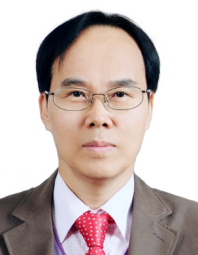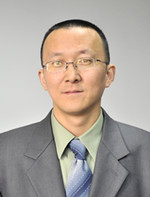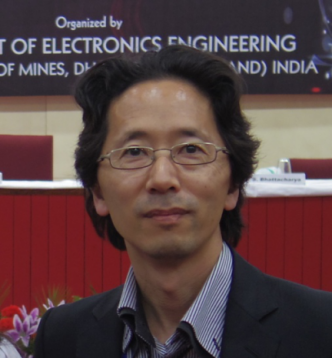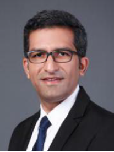Speakers 2019
Keynote Speaker I

Prof. Hee-Je Kim
Pusan national University, Busan, South Korea
Speech Title: Smart Controlled Solar/Thermal/ESS (Energy Storage System) Application Systems
Abstract: Around the world, many governments have strived to increase the share of renewable green energy in their power productions. The main interest has mainly been energy security, increasing prices of carbon based energy sources and minimizing global warming. Concerning the second, global shipping is a major contributor to GHG (global greenhouse gas) emissions, bring responsible for approximately 3% of global CO2 emissions.
The IMO (international maritime organization) is now working to start GHG regulations for global shipping, and is under pressure, e.g. from EU and UNFCCC (United Nations framework convention on climate change), to apply regulations that will have a substantial impact on emissions.
In addition, we introduce the second application of stand-alone PV and Thermal power hybrid system. The solar and thermal heating water hybrid generation and ESS will be very important in the isolated island and distant place without electrical power supply. So we demonstrate a cold storehouse for fresh fruits with a proto-type stand-alone PV system with ESS by using smart-phone based on internet networking as the next generation solar power system with various new applications.
Furthermore, we have been developed the eco-friendly power system controlled by personal smart-phone. And we introduce the future of ESS applications such as new farming system, micro dust removing eco-friendly bill-board system and so on.
Bio: Prof. Hee-Je Kim got PhD of Energy Conversion, Kyushu University, Fukuoka city, Japan. (1990, March) At present he is professor of Department of Electrical Engineering in Pusan National University (Busan, South Korea). And the group leader of BRL (Basic Research Lab.). He is currently working as an Associate Editor of NJC (New Journal of Chemistry)-RSC shared and Editorial Board Member of Journal [Energies]. He has published more than 250 papers in reputed journals.
Keynote Speaker II

Prof. Juntao Fei
Hohai University, China
Speech Title: Adaptive Global Sliding Mode Control for Active Power Filter Using Double Hidden Layer Recurrent Neural Network Structure
Abstract: In this paper, a full-regulated recurrent neural structure which has double hidden layer neural network (DHLRNN) is designed. Then, an adaptive global sliding mode controller based on the double hidden layer recurrent neural network is proposed to improve the performance of harmonic current compensation and system robustness of Active Power Filter (APF). Usually, it is lack of theoretical guidance and adaptive adjustment mechanism to set up base width and central vector of Gaussian function when faced with different input signals, which requires multiple debugging manually. However, six parameters of the double hidden layer recurrent neural designed in this paper can adaptively stabilize to their best values according to different inputs. Compared with the general Radial Basis Function(RBF) neural network with single hidden layer, the double hidden layer neural network can improve the accuracy and generalization ability of the network, reduce the number of network weights and accelerate the network training speed owing to the strong fitting and presentation ability of two-layer activation functions. The feedback neural network plays the significant role in possessing associative memory and rapid system convergence. The simulation and experimental results demonstrated that the satisfactory performance of proposed controller under both dynamic and steady state operations, including robustness, fast response, and small overshoot for harmonic suppression.
Bio: Professor Juntao Fei received his B.S. degree from the Hefei University of Technology in 1991, M.S. degree from University of Science and Technology of China in 1998, M.S and Ph.D. degree from the University of Akron, USA in 2003 and 2007 respectively. He was a visiting scholar at University of Virginia, USA from 2002 to 2003, North Carolina State University, USA from 2003 to 2004 respectively. He served as an assistant professor at the University of Louisiana, USA from 2007 to 2009. Since May 2009, He has been a Professor at the College of IoT Engineering, Hohai University , Director of Institute of Electrical and Control Engineering. His research interests include adaptive control, intelligent control, sliding mode control, power electronics and control, mechatronics and robotics, smart material and structure. He is a Senior Member of IEEE. He has served as an associate editor for Transactions of the Institute of Measurement and Control, reviewers for numerous international journals, program committee members and chairs for numerous international conferences. He has published more than 200 journal and conference papers and 5 books and led more than 20 funded research projects as Principal Investigator. He authorized 50 invention patents. He is an awardee of the Recruitment Program of Global Experts (China). His biography has been included in Who’s Who in the World, Who’s Who in Science and Engineering, Who’s Who in America.
Keynote Speaker III

Prof. Satoru Kaneko
Kanagawa Institute of Industrial Science and Technology (KISTEC), Japan
Speech Title: Graphene growth on insulator: irradiating 10B pencil drawn paper, diamond like carbon and PLD in carbon oxides
Abstract: After the discovery of graphene prepared by peeling graphite off using scotch tape, many methods are proposed and actually have used to prepare graphene film such as thermal decomposition of silicon carbide (SiC), and chemical vapor deposition (CVD) method. However, the CVD method requires metal catalyst (Cu, Ni), and films are required to transfer onto insulating substrates for device fabrications. Another interesting method employs pencils and paper. Paper sheet drown using a lead pencil was irradiated by both femtosecond laser and laser cutter (consumer product, a few hundred dollars), and graphitic materials remain on the paper sheet [1]. Diamond like carbon on silicon substrate was also employed for laser irradiation. In this presentation, yet another method using pulsed laser deposition (PLD) in carbon oxide[2] will be proposed.
Although carbon dioxide (CO2) is product after hydrocarbon combustion in oxygen atmosphere, interestingly, CO2 can be an oxidant in certain situations. We show direct growth of graphene on insulating substrates in 100% CO2 environment, and observed the layer by layer growth on stepped edge of insulating substrate. The direct growth can be a large advantage over other common methods because of excluding the necessary process of transferring the graphene on insulating substrate.
Bio: Satoru Kaneko is a group leader at KISTEC (Kanagawa Institute of Industrial Technology and Science), and a visiting researcher at Tokyo Institute of Technology. He received B.S. at Tokyo Metropolitan Univ., M.S.at Univ. of Arizona, and ph.D. at Tokyo Institute of Technology. His study focuses on synthesis of functional materials of oxides, superconductor, and graphite related materials, and also interested in fabrication of nano structure, for example, self-organisation of periodic nanostructure by laser scanning. He spends weekend with road bike and joking, and enjoys making bacon and beer in back yard.
Keynote Speaker IV

Prof. Hamidreza Arandiyan
Laboratory of Advanced Catalysis for Sustainability, School of Chemistry, The
University of Sydney, Sydney 2006, Australia
Speech Title: Flower-like LaNiAlO3-supported nickel catalysts for carbon monoxide methanation
Abstract: A series of supported Ni nanoparticles on a flower-like porous LaNi0.6Al0.4O3 (LNAO) perovskite carrier(zNi/LNAO; z = 5, 10 and 15 wt%) were successfully synthesized using a controlled self-assembly sol-gel method. The experimental results showed that the presence of Ni nanoparticles markedly enhanced the reaction rate of CO conversion, namely from 12.4 mmol/(gcat h) over LNAO to 244 mmol/(gcat h) over 10 wt% Ni/LNAO. The porous LNAO perovskite support provides both a large surface area to well disperse Ni nanoparticles and active sites for the methanation reaction, thus resulting in a catalyst with activity (per gram of catalyst basis) at least comparable to other nickel metal-based supported catalysts reported so far and with very good stability. Reaction rates calculated based on Ni exposed surface and total Ni amount revealed that Ni active sites in the Ni nanoparticles and bulk perovskite were distinct.
Bio: He obtained his Ph.D. in School of Environment (2014) at Tsinghua University and recipient of several awards and fellowships including Top 10 Postgraduate Award of Tsinghua University, working under the supervision of Prof. Junhua Li. In the meantime, he also collaboratively worked in the laboratory of Prof. Hongxing Dai at the Beijing University of Technology. He was awarded (2015) a Vice-Chancellor’s Postdoctoral Research Fellow at the University of New South Wales. He was recently awarded (2018) a University of Sydney Senior Research Fellow. His research interests are environmental remediation and energy conversion, aiming to enhance sustainability by generating and using new fundamental insights on the molecular and nanoscopic level to develop feasible leads for the design of new catalytic chemical routes and processes. His recent research project involves the rational design of porous perovskite oxide catalysts for the environmental pollutant prevention and energy conversion. Dr Arandiyan has published more than 100 peer-review papers in heterogonous catalysis area.